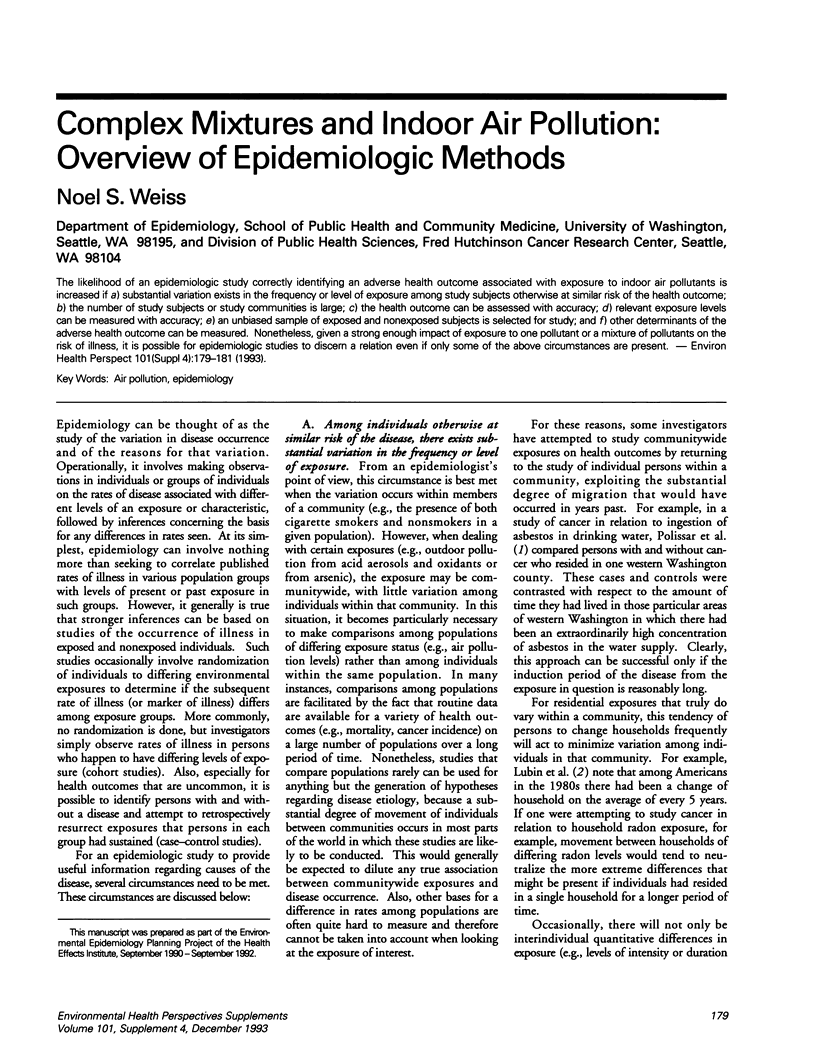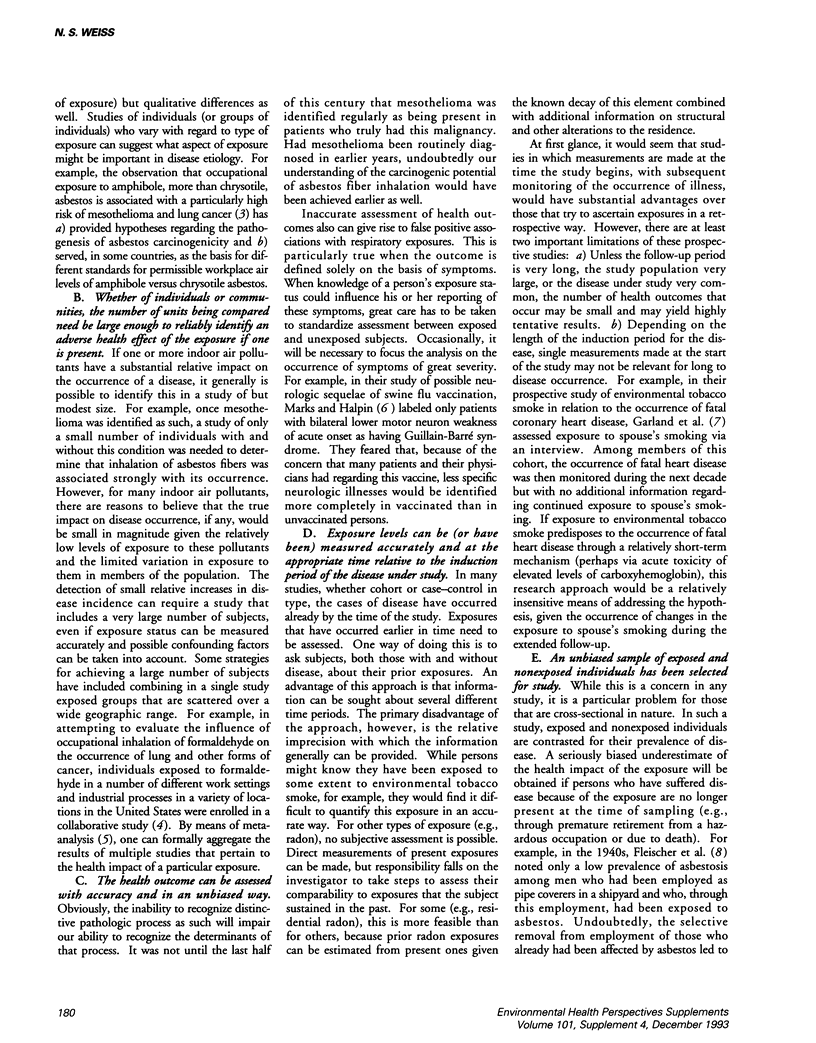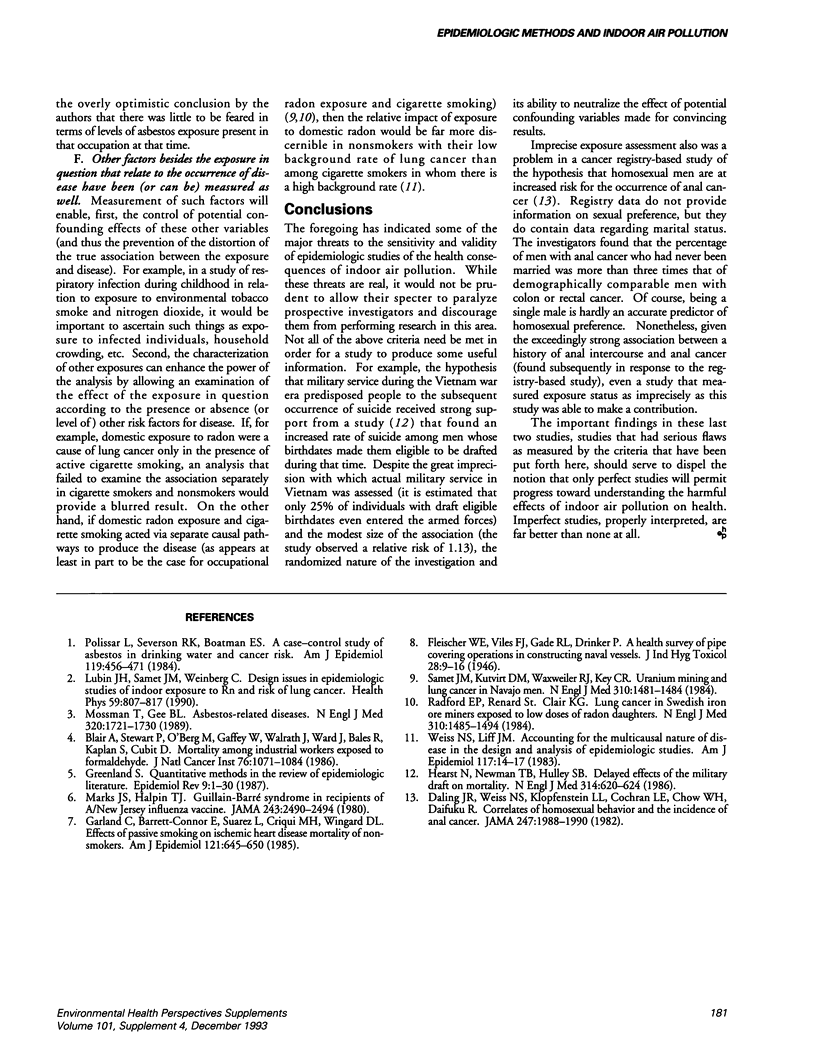Abstract
The likelihood of an epidemiologic study correctly identifying an adverse health outcome associated with exposure to indoor air pollutants is increased if a) substantial variation exists in the frequency or level of exposure among study subjects otherwise at similar risk of the health outcome; b) the number of study subjects or study communities is large; c) the health outcome can be assessed with accuracy; d) relevant exposure levels can be measured with accuracy; e) an unbiased sample of exposed and nonexposed subjects is selected for study; and f) other determinants of the adverse health outcome can be measured. Nonetheless, given a strong enough impact of exposure to one pollutant or a mixture of pollutants on the risk of illness, it is possible for epidemiologic studies to discern a relation even if only some of the above circumstances are present.
Full text
PDF


Selected References
These references are in PubMed. This may not be the complete list of references from this article.
- Blair A., Stewart P., O'Berg M., Gaffey W., Walrath J., Ward J., Bales R., Kaplan S., Cubit D. Mortality among industrial workers exposed to formaldehyde. J Natl Cancer Inst. 1986 Jun;76(6):1071–1084. [PubMed] [Google Scholar]
- Daling J. R., Weiss N. S., Klopfenstein L. L., Cochran L. E., Chow W. H., Daifuku R. Correlates of homosexual behavior and the incidence of anal cancer. JAMA. 1982 Apr 9;247(14):1988–1990. [PubMed] [Google Scholar]
- Garland C., Barrett-Connor E., Suarez L., Criqui M. H., Wingard D. L. Effects of passive smoking on ischemic heart disease mortality of nonsmokers. A prospective study. Am J Epidemiol. 1985 May;121(5):645–650. doi: 10.1093/aje/121.5.645. [DOI] [PubMed] [Google Scholar]
- Greenland S. Quantitative methods in the review of epidemiologic literature. Epidemiol Rev. 1987;9:1–30. doi: 10.1093/oxfordjournals.epirev.a036298. [DOI] [PubMed] [Google Scholar]
- Hearst N., Newman T. B., Hulley S. B. Delayed effects of the military draft on mortality. A randomized natural experiment. N Engl J Med. 1986 Mar 6;314(10):620–624. doi: 10.1056/NEJM198603063141005. [DOI] [PubMed] [Google Scholar]
- Lubin J. H., Samet J. M., Weinberg C. Design issues in epidemiologic studies of indoor exposure to Rn and risk of lung cancer. Health Phys. 1990 Dec;59(6):807–817. doi: 10.1097/00004032-199012000-00004. [DOI] [PubMed] [Google Scholar]
- Marks J. S., Halpin T. J. Guillain-Barré syndrome in recipients of A/New Jersey influenza vaccine. JAMA. 1980 Jun 27;243(24):2490–2494. [PubMed] [Google Scholar]
- Mossman B. T., Gee J. B. Asbestos-related diseases. N Engl J Med. 1989 Jun 29;320(26):1721–1730. doi: 10.1056/NEJM198906293202604. [DOI] [PubMed] [Google Scholar]
- Polissar L., Severson R. K., Boatman E. S. A case-control study of asbestos in drinking water and cancer risk. Am J Epidemiol. 1984 Mar;119(3):456–471. doi: 10.1093/oxfordjournals.aje.a113763. [DOI] [PubMed] [Google Scholar]
- Radford E. P., Renard K. G. Lung cancer in Swedish iron miners exposed to low doses of radon daughters. N Engl J Med. 1984 Jun 7;310(23):1485–1494. doi: 10.1056/NEJM198406073102302. [DOI] [PubMed] [Google Scholar]
- Samet J. M., Kutvirt D. M., Waxweiler R. J., Key C. R. Uranium mining and lung cancer in Navajo men. N Engl J Med. 1984 Jun 7;310(23):1481–1484. doi: 10.1056/NEJM198406073102301. [DOI] [PubMed] [Google Scholar]
- Weiss N. S., Liff J. M. Accounting for the multicausal nature of disease in the design and analysis of epidemiologic studies. Am J Epidemiol. 1983 Jan;117(1):14–18. doi: 10.1093/oxfordjournals.aje.a113509. [DOI] [PubMed] [Google Scholar]


